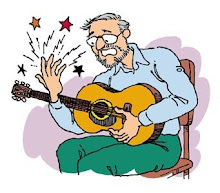By Chuck Durang
There is doubt and much speculation about the origin of skiing. A form of locomotion as well as recreation, it probably came about early in the prehistory of the Northland. The Swedish Hoting ski, discovered in a peat bog, dates back to 2000 B.C. It may be that, as some people skiied into peat bogs, others were moved to abandon the sport. Its current renaissance began in more recent times with the advent of mass production no-deposit, no-return barrels.
NATURE OF SKIING
Skiing is the sport of propelling oneself over snow upon two boards, called skis, each about six to eight feet long and approximately three inches wide. It is similar to surfing with more boards, clothing, and Ace bandage.
There are several types of skiing: downhill, slalom, cross-country, jumping, and uphill. All require different types of skis except uphill, which is executed without skis, being the art of going back uphill to retrieve the skis you have fallen out of. We shall discuss here only downhill skiing, which is basic to other forms.
EQUIPMENT AND SAFETY
To be properly equipped for skiing, one must have skis, which are attached to boots by means of bindings. Poles are the final necessity. Luxuries include loud clothing, Blue Cross, and a large capacity for hot buttered rum. Skis must be attached to the bindings so as to fall off easily in case of emergency. Boots should be attached so as to stay on. Most Poles come from Poland. Care of the equipment is most important due to its cost as well as for reasons of safety. For utmost safety, skis should be waxed and then left on the porch where they can be stolen before going out on the slopes in them.
TECHNIQUES AND FUNDAMENTALS
The beginner should learn the art of skiing in the following steps: (1) how to put skis on and take them off (it has been suggested that it is wise to stop here), (2) how to ski on level ground, (3) correct running positions, (4) how to turn and stop, and (5) how to call for the Ski Patrol.
WALKING
Walking with skis on is impossible and should not be tried.
THE KICK TURN
Place the pole close to the tip of the left ski and the right pole back of the right ski and lifte the right ski clear and swing it around parallel tto the left ski but facing in some other direction. Transfer weight to the other ski, balance on the right pole, then swing the left ski and pole around. Tape all sprains and commence in the new direction.
UPHILL CLIMBING
There are several methods of climbing uphill in order to ski down again, none of which are correct. The semi-sidestep, on gentle slopes, consists of walking with short strides uphill at an angle. The sidestep, on steep slopes, eliminates the forward motion. The herringbone is found in the herring, a small food fish of the North Atlantic. The ski tow is a coward’s way out…
DOWNHILL RUNNING
Placing knees and skis together, push off onto the slope with the poles, and prepare to meet thy Maker. Positions for downhill running include the normal upright, with weight evenly distributed, the traverse, for crossing a slope with most of the weight on the lower leg, the lunge, with knee bent according to conditions (if conditions cause knee to bend more than 180 degrees, you are doing something wrong), and the prone, with most of the weight upon the face.
BRAKING
There are tour methods of stopping: the sideslip, single stem, double stem or snowplow, and crash. By shifting the weight while horizontal to a slope, a controlled slowing called sideslip is executed. Turning the tip of one ski out and slowing by the resulting drag is a single stem, and tuning both skis out results in either one of the last two named methods.
TURNING
The stem-turn is accomplished by removing all weight from the ski that has not been turned out, then turning it to a position parallel with the stemmng ski. The Christiana, or Christie, is a fast skid turn made by keeping the weight forward and swinging the hips to slide the back ends of the skis around. The Telemark is a turn for deep snow first used in Telemarken, Norway. It requires a protractor and shovel.
TERMINOLOGY
Fall Line- the shortest, most direct line down a slope or cliff
Gelaensprung- a jump or obstacle encountered while running downhill
Kanone- a hot-dogger
Oversprung- a Jump of 90 degrees ending in a full stop-as, off the roof of the lodge.
Ruecklage- a backward lean from the ankles
Wreckage- an extreme backward lean
Sitzmark- means exactly what you think it means
Schuss- a straight descent at high speed
Scheiss!- expostulation frequently heard at conclusion of Schuss.
Subscribe to:
Post Comments (Atom)

1 comment:
Very entertaining
quite the thought process
I'm looking forward to reading more from this Bloke
does he really look like the drawings?
Post a Comment